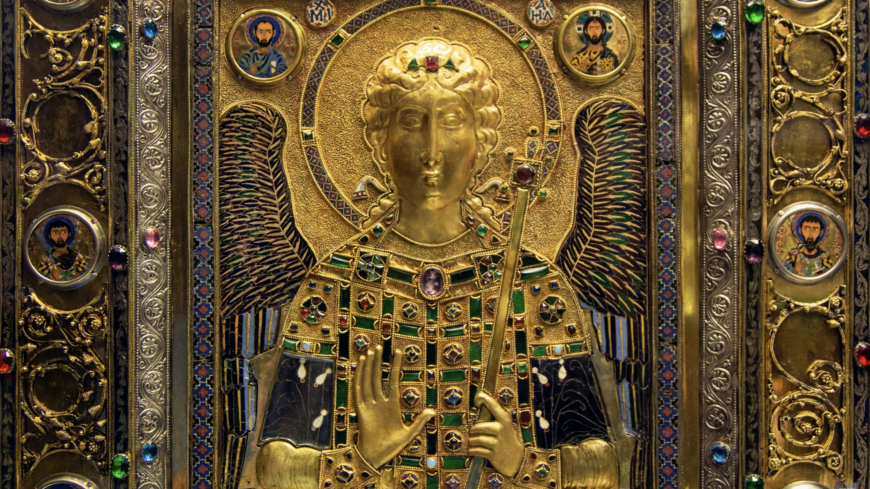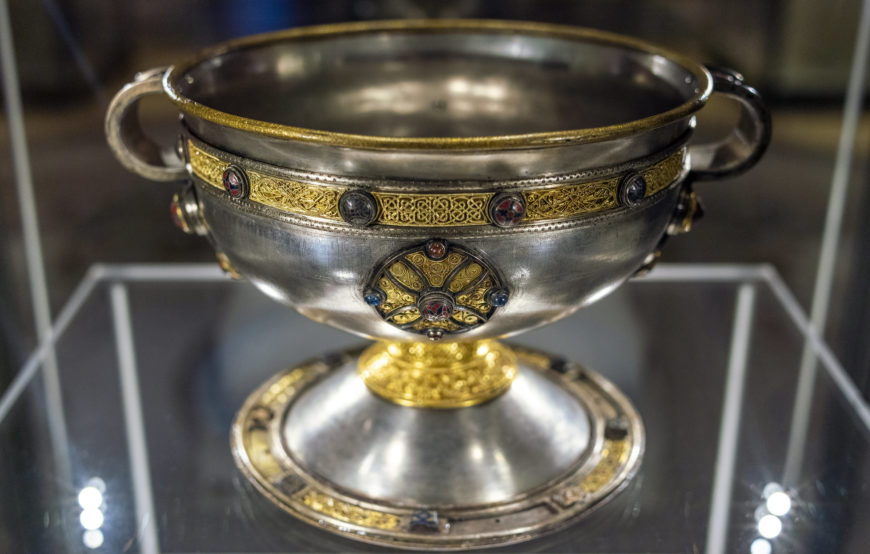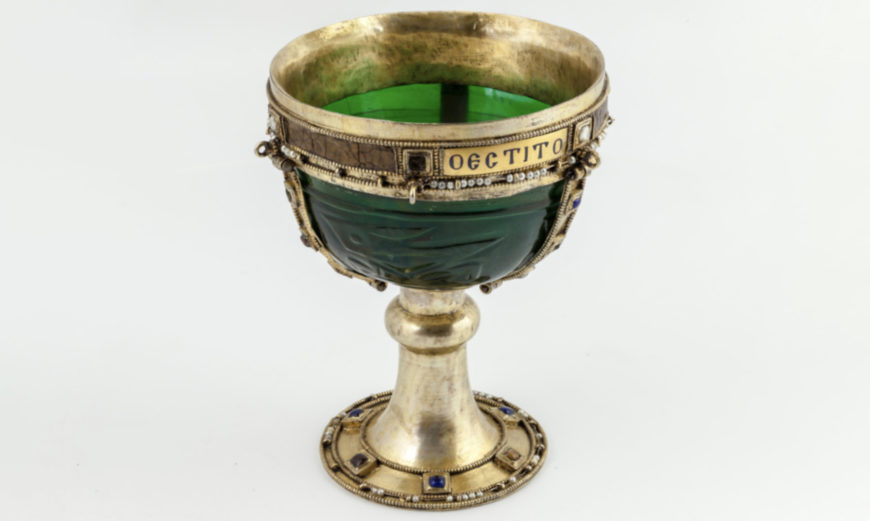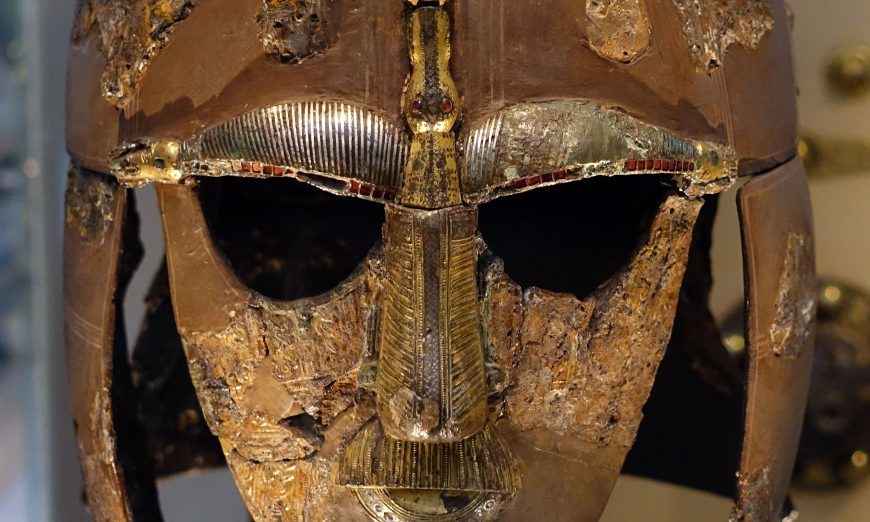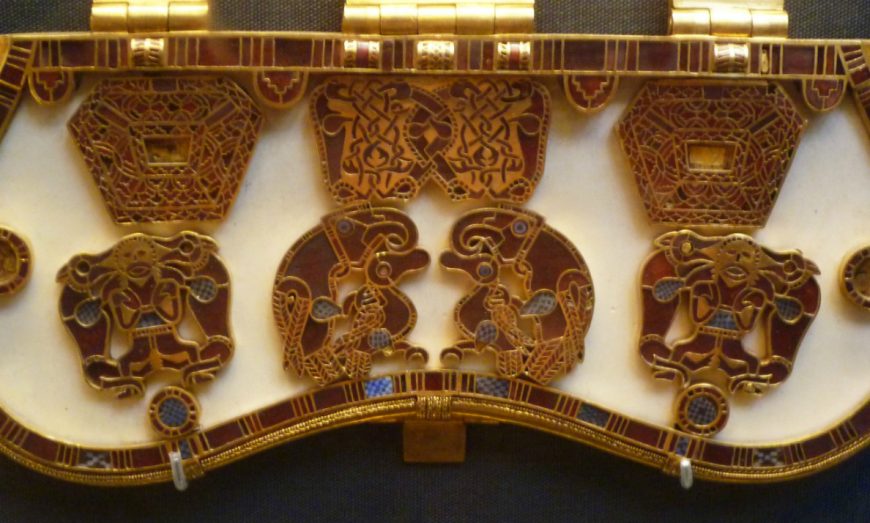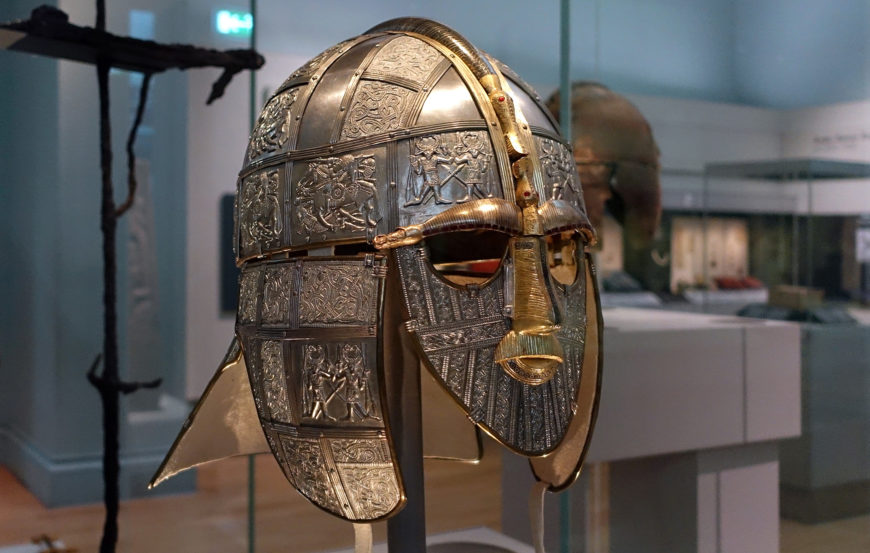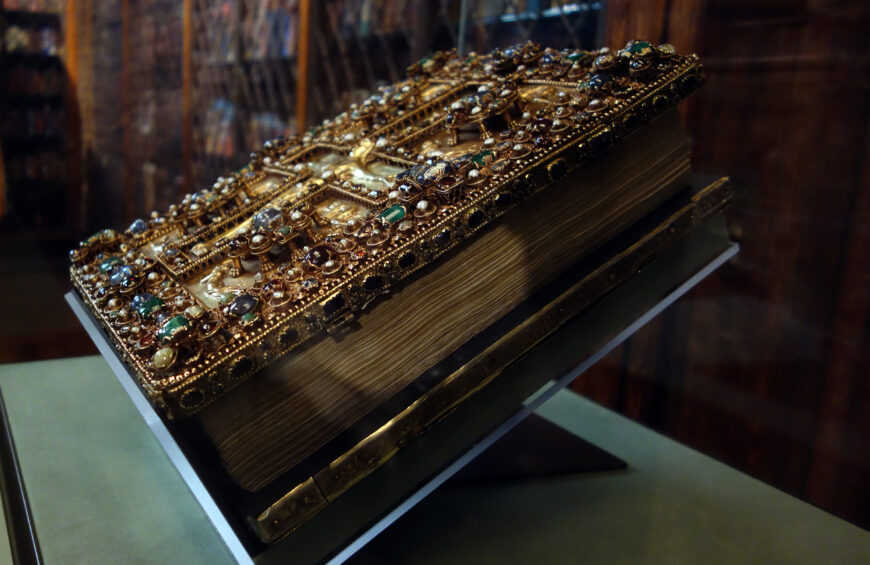Large, colorful gems ornament this magnificent Ottonian cross, likely made for emperor Otto III.
Cross of Lothair II, c. 1000 (Ottonian), oak core, gold, silver, gems, pearls, Augustus spolia cameo, cloisonné enamel, 50 x 38.5 x 2.3 cm, base dates to the 14th century, dedicated by Otto III (Aachen Cathedral Treasury Germany). Speakers: Dr. Beth Harris and Dr. Steven Zucker





